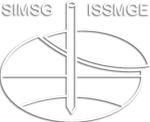Deterioration characteristics of cement stabilized soils with different fine fraction content under seawater environment
Deterioration characteristics of cement stabilized soils with different fine fraction content under seawater environment
Soft ground is widely distributed in the coastal areas of Japan, and the cement stabilization method is commonly used as a countermeasure to the associated problems. However, recently, it was reported that cement stabilized soil might deteriorate when exposed to seawater for an extended time in such regions. The deterioration mechanism of cement stabilized soil is still not well understood, and a general method for predicting the deterioration progress is lacking. In this study, the influence of the fine fraction content of the cement stabilized soils base material on the seawater resistance was investigated, and the deterioration characteristics when exposed to seawater were discussed. The results of chemical analysis by the XRF test showed that the leaching of Ca, penetration of Mg, and penetration of sulfate (S) increased with depth for the specimens with higher fine fraction. Finally, the penetration of sulfate (S) in seawater was confirmed as one of the causes of the strength deterioration of cement stabilized soil. Furthermore, the distribution of S concentration through the specimens was expressed using the diffusion equation, assuming that the penetration of S into the specimens proceeds in the same way as the diffusion of material with concentration. The predicted deterioration depths were compared with the results obtained in the laboratory.
R. Ishikura; Noriyuki Yasufuku; A. Alowaisy; T. Kono; T. Fujisawa
9th International Congress on Environmental Geotechnics (ICEG2023)
Stabilization
https://doi.org/10.53243/ICEG2023-191
